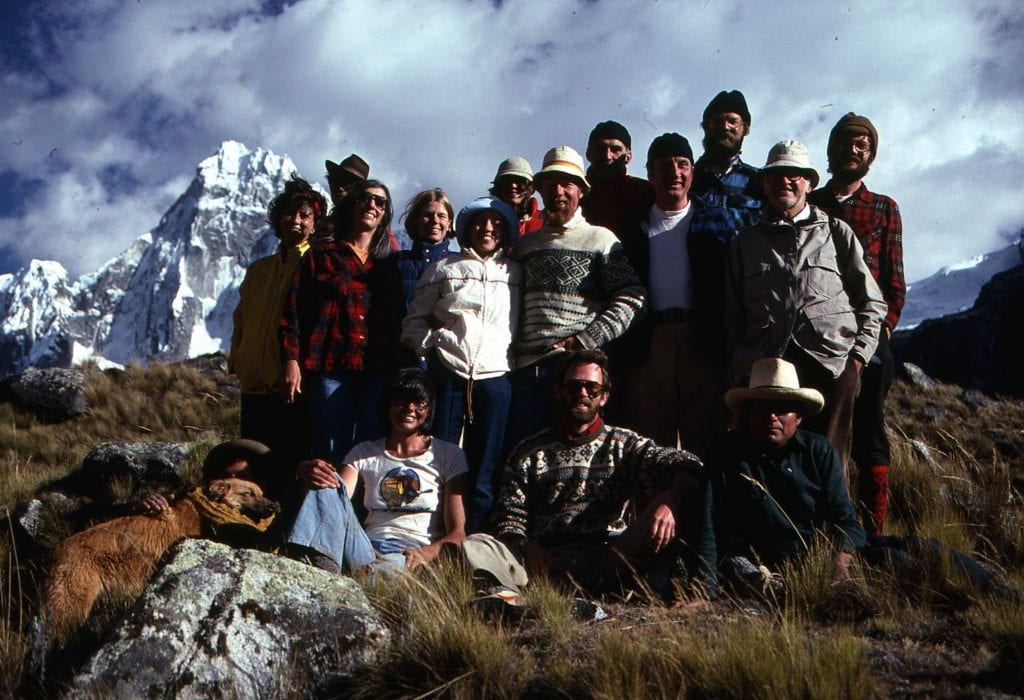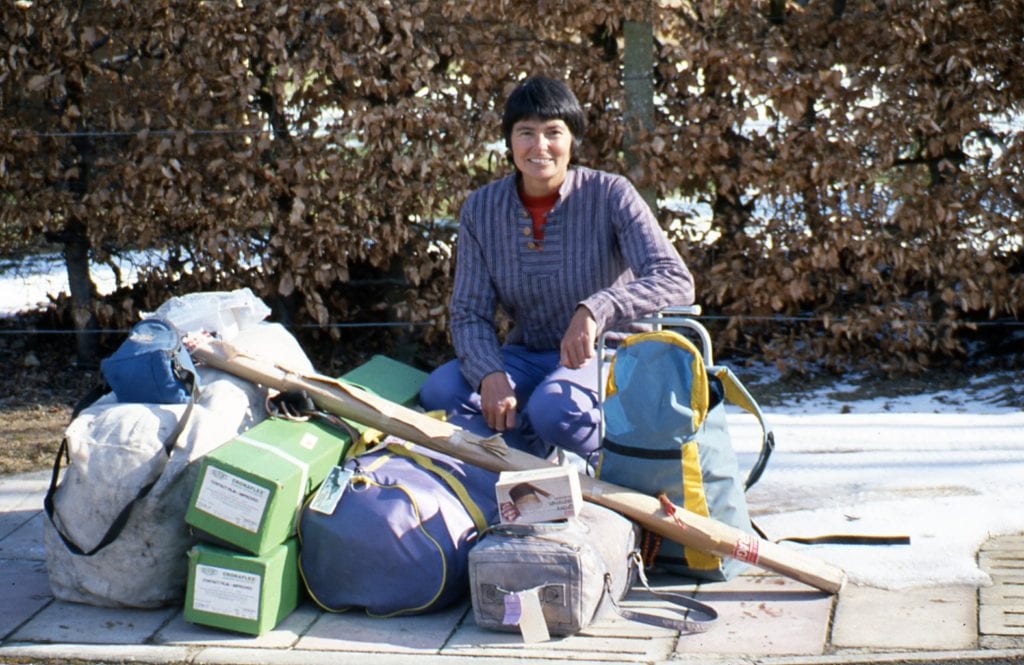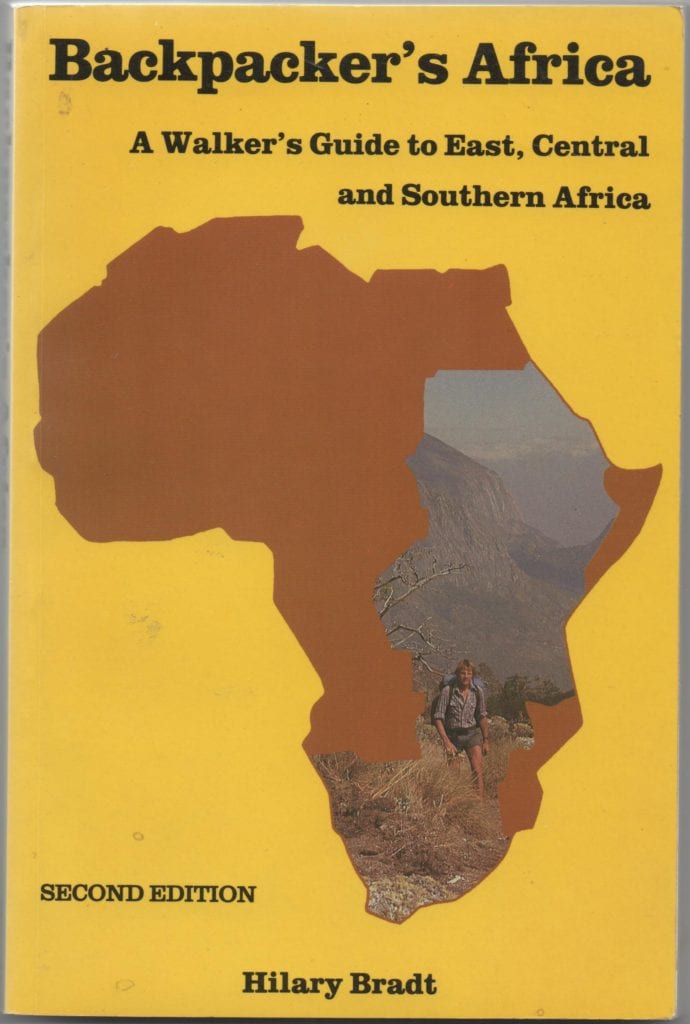If you missed the first two chapters, you can read them here and here.
Once George and I had split up in 1980 and would no longer be producing books together, my parents – for some unfathomable reason – decided that moving to a smaller house might be the only solution to an ongoing problem. It was built in the bottom of the garden and they connived with the architect that there would be no spare room. Not for a long-term lodger, anyway.
I moved in with my sister who had a granny annexe and two small children. A live-in babysitter proved handy for her and I had a one-room office/bedroom in which to produce books. I also had an assistant. The lovely and much-missed Janet Mears (who sadly passed away in 2018) answered an advert to ‘do a bit of typing’ and ended up running the show when I was away.

And I was away a lot. Since publishing was not providing me with much of a living, I became a tour leader – not the ideal job for someone who is absent-minded and suffers from prosopagnosia (face blindness). But, as they say, you can fool some of the people some of the time, and I was hired by Wilderness Travel of Berkeley to lead treks to South America, to create wildlife tours to Madagascar and occasional safaris to Kenya.
Tour-leading not only took care of income, but also guidebook research. It was an ideal combination, and is largely the reason that both Peru & Bolivia and Madagascar have gone into numerous editions (the latter coming up for its 13th). And there was another prong to my publishing which made the biggest contribution to profits during the 1980s. And this, I owe entirely to George.
Maps, maps and more maps
In 1978, as we travelled northwest through Central America researching that guide, we visited the Geographic Institutes and tourist offices of each country to buy the best country and topographical maps. In El Salvador’s capital, San Salvador, George popped into the tourist office while I guarded our luggage. He emerged with a hundred maps of the country and the conviction that we would be able to sell them. I was furious.
But he was right. Stanfords in London and the best map shops in New York and California were delighted to buy these maps, which not only had a decent map of the whole country on one side but the entirety of Central America on the reverse. Nothing like that existed in our home countries at the time, and so they were lapped up.
Map sales thus became a major part of the business and my tour-leading visits to South America played a vital role. The three military geographic institutes of Ecuador, Peru and Bolivia sold good country maps and excellent topographical ones at a scale of 1:100,000: essential for anyone planning a hiking or backpacking trip to the Andes.
Each time I led a tour, I went to the Instituto Geografico Militar and bought a hundred country maps and a dozen or so topographical maps of each of the most popular trekking regions. I became quite friendly with the army officials responsible for selling these maps. I remember the name of the one in Quito because it was printed on a brass plate on his desk. Sr Hitler Velasquez (I could imagine his parents in 1940 saying ‘Let’s call him after that nice man in Germany’).

My luggage in those days was old US mail sacks, and I always filled an entire mail sack with maps, along with large cardboard tubes for the flat topographical ones. But how to get them home if I ended up having more than the permitted two pieces of luggage? This was before the days of computerised airline check-in so I would arrive as early as possible at Lima airport with my maximum luggage allowance. An hour or so later I would return with two more bags and explain that I had checked in early but without my luggage because … and whatever excuse I could think of. It worked. Until one day the system had improved and they had a record of my earlier visit. That was the end of that little ruse.
Those topographical maps were in high demand, particularly in Germany, and formed the bulk of my sales on the trips to Europe that I continued to make by rail, and ensured that I was a welcome visitor at all the travel bookstores. And we did excellent mail-order business with a mark-up five times the purchase cost in Peru. Sometime hikers would turn up on Janet’s doorstep in the early morning on their way to Heathrow.
Finally, for a brief period, we became map publishers. It was at this time that we changed our name to Bradt Publications to cover maps as well as guidebooks – and a venture into narrative books. I became friends with an Australian do-it-yourself cartographer, Kevin Healey, who had produced an excellent two-sheet map of South America. We decided to publish this ourselves (with Kevin’s cartography), along with an innovative one of the Galapagos Islands to which I was leading tours and knew there were no maps available. Both did well.
The leap into typesetting
The book that I most enjoyed creating was the last one before we succumbed to typesetting. The second edition of Backpacker’s Africa was a really nice-looking guide, with a rather beautiful cover design that I created from a cut-out map of Africa with an inset photo showing the region covered. The title was typeset rather than stuck on with Letraset, as were the chapter headings. I found a creative young man to do the maps with Letraset, utilising all the lovely patterns then available to indicate water, national parks and so on. These were a huge improvement to my wobbly hand-lettering.

My favourite part of these typewritten books was designing each page. Any white space was filled with an illustration or quote in italics, maps and photos needed to be positioned, and new chapters start on the recto (right-hand) page. Janet typed it from my handwritten text on a golf-ball typewriter, which allowed a change of type: all of a sudden we had the luxury of bold and italics, and a choice of point sizes. It’s probably the first book we produced with no spelling mistakes because Janet was a meticulous proofreader and typist. And she loved doing it.
All this pleasure had to end, however. Competition was creeping in and guidebooks had to look professional – and that meant typeset. A couple of books were retyped by professionals on a dedicated typesetting machine, but this was not only very expensive and time-consuming but a source of errors. Then, in 1985, I bought a word processor and made the terrifying leap from sending an author’s typed manuscript to a typesetter, to embarking on typesetting from disk. Revolutionary. It all made perfect sense – no need to wastefully re-key the text, no risk of new errors creeping in, the ability to make last-minute changes as countries tiresomely changed town names or entry requirements – and a massive reduction in costs.
Wrong. These were the days before WYSIWYG and so any change of type, such as headings, italics or bold had to be done with an open and close code – as indeed they did with my WordStar programme on the computer – but the man who advertised himself as an expert in ‘typesetting from computer or word processor’ turned out to be neither expert nor conscientious. To cut a long story short, the finished text was full of mistakes where he’d retyped sections which had gone AWOL, delivered two days before it had to go to the printer.
By thinking I’d removed human error I had introduced a whole lot more on what originated as perfect text. And lost control of the project. This wasn’t the last disaster either. Before I learned to put in the codes myself I had another inexpensive ‘expert’ do it for me. His quote of £440 including editing was very attractive. The final far-from-satisfactory text invoiced at £2,148 (I think we settled for something lower).
Creating a book by hand
Eventually, of course, it all worked out. I accepted that guidebooks are a very different proposition from novels – which are what these experts were basing their quotes on – and I learned how to insert codes reasonably accurately, and to pass on the savings to computer-savvy authors who were willing to put in the codes themselves.
I learned that it was important to get a set of laser-printed proofs to ensure that I hadn’t made any coding errors before the final text – a nice shiny roll of printed bromide, dozens of feet long arrived through the mail in a cardboard tube. It cost £3.00 per foot and I still had to do the (literal) cut and paste. I bought a light box, marked up a template for the text area, and cut the bromide into pages, pasting in photos, maps and illustrations, discovering spelling mistakes and using a craft knife to create a word out of discarded text (tricky!).
The final stage would be to cut and paste the page numbers and running head onto every page. This was often done through the night to the accompaniment of Paul Simon and Graceland before driving in the small hours to Paddington to deliver the parcel to the Red Star service to be collected by the printer in Exeter the following day. Deadlines had to be met.
The best adhesive was – and is – Spray Mount, but I learned that inhaling the stuff in a closed room for several hours does not improve the brain. One time after an all-night session I went to my computer and stared uncomprehendingly at the keyboard. I had no idea what I was supposed to do with it. I phoned a friend and talked gibberish. So I went to bed.
Despite the deadlines and disasters I loved that era. I loved seeing the process through myself from commissioning an author to editing the manuscript, organising photos or illustrations, booking the printer… the lot. But it couldn’t last. Sales were good, and I couldn’t stop production when I went abroad. I needed to employ staff – people who knew what they were doing. Remember that song ‘You gave away the things you loved and one of them was me’? I did give away the parts of publishing that I loved most. And the company started to flourish as a consequence.
I’m reminded of a time, in the first year or so of Bradt Enterprises, when George and I went to meet an American travel publisher to get a few tips. To our astonishment he played no part in the production of his books. ‘So what do you do all day?’
He smiled. ‘I sit at my desk and try to think of more ways to sell books’. That option had never occurred to us.
Read the final part here.